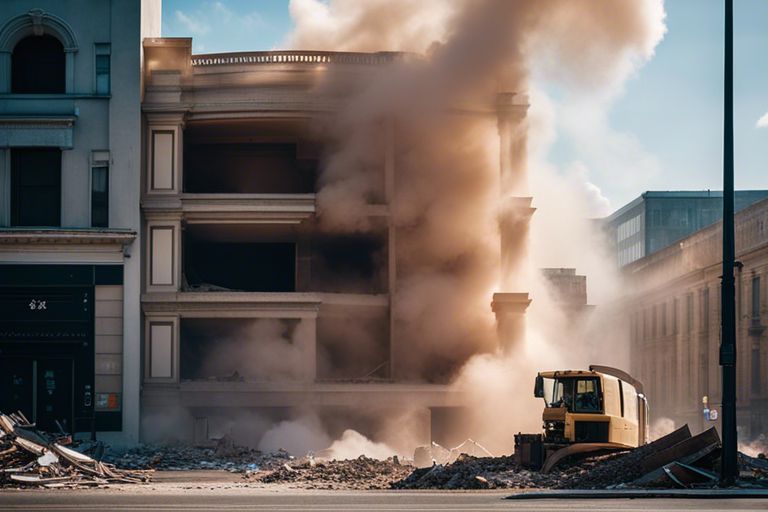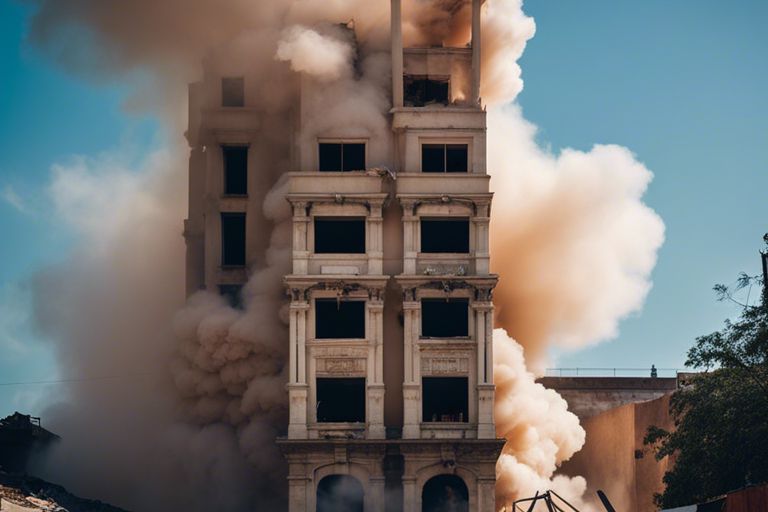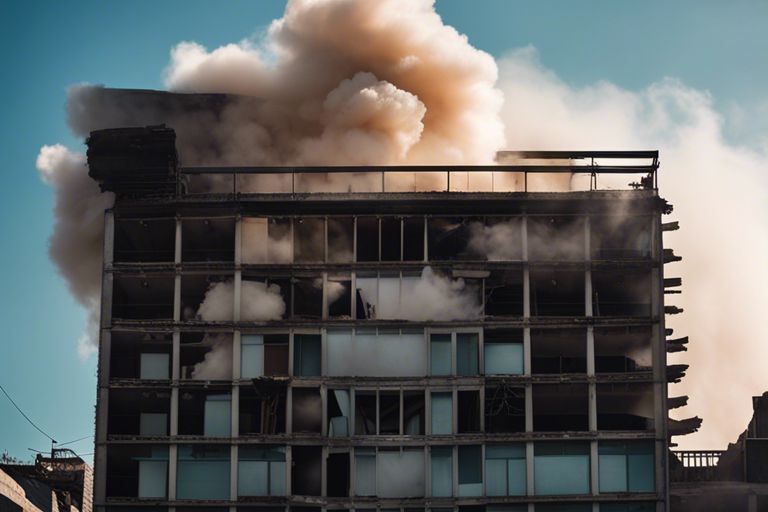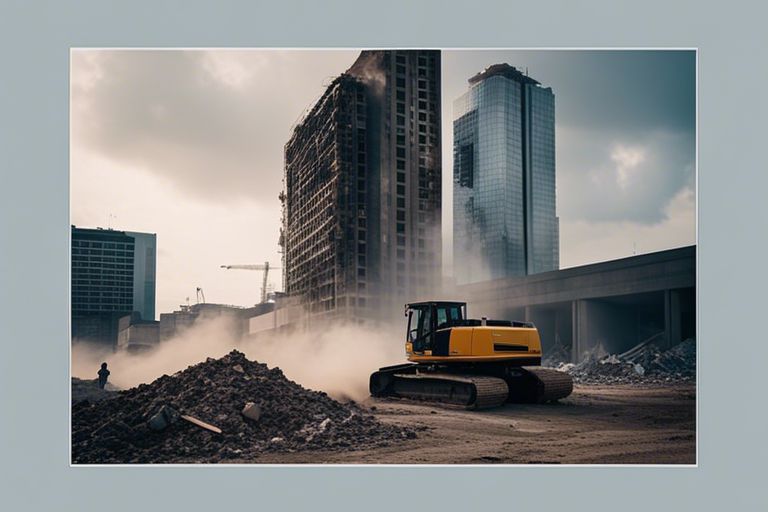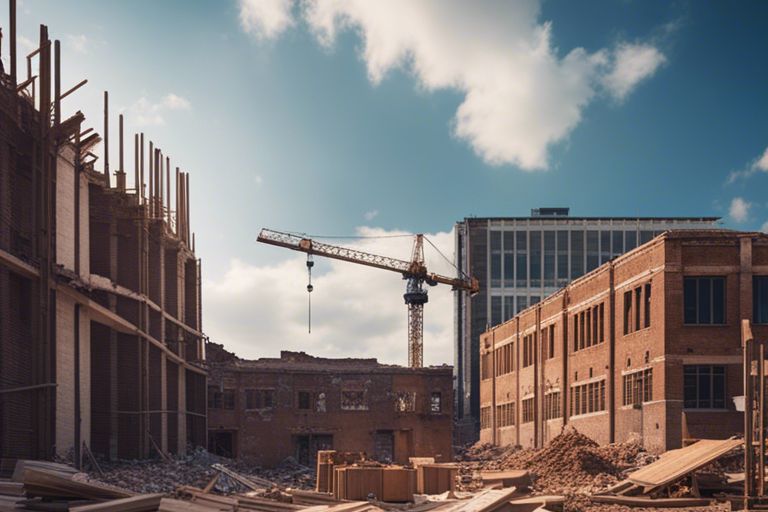Demolition is not just about destruction; it is a complex process that requires meticulous planning and consideration, especially when it comes to the aesthetic aspects of tearing down buildings. From preserving historical facades to minimising dust and debris, there are important factors that contribute to the safety and efficiency of a demolition project. Understanding how to balance the aesthetic impact with practical concerns is crucial for successful demolition work. Join us as we research into the world of demolition and explore the artistic side of bringing structures down.
Key Takeaways:
- Historical significance: Demolition of buildings should consider their historical and cultural value before proceeding.
- Environmental impact: Aesthetic demolition should incorporate sustainable practices to reduce waste and minimise environmental damage.
- Community engagement: Involving the local community in demolition projects can help preserve memories and create a sense of shared responsibility for urban development.
Historical Perspective
When examining the art of demolition, it is vital to understand the historical perspective that has shaped the techniques and considerations involved in tearing down buildings. To explore deeper into this topic, you can explore the full article on The Art of Demolition.
Evolution of Demolition Techniques
The evolution of demolition techniques over the centuries has been a fascinating journey of innovation and efficiency. From manual labour and basic tools to the use of explosives and advanced machinery, the process of tearing down structures has become safer, faster, and more precise.
The Role of Aesthetics in Historical Building Removal
Throughout history, the role of aesthetics in historical building removal has been a significant consideration. Preserving the architectural heritage of a building while efficiently dismantling it requires a delicate balance between conservation and progress. Architects, engineers, and demolition experts have worked together to ensure that the removal of buildings is not only practical but also respectful of the history and craftsmanship embodied in the structures.
Planning for Aesthetic Demolition
Architectural Considerations
When planning for aesthetic demolition, it is crucial to consider architectural considerations to ensure the process is carried out in a way that respects the building’s design and surrounding structures. By prioritising Selective Demolition: Artful Techniques for Preserving…, you can preserve key architectural features while demolishing the building.
Engaging with the Community
Engaging with the community is a vital aspect of planning for aesthetic demolition. Community involvement helps in gaining valuable insights, addressing concerns, and fostering a sense of shared responsibility for the demolition process. By listening to the community’s feedback and communicating openly and transparently throughout the project, a more harmonious relationship can be built between the demolition team and the local residents.
Execution of Aesthetic Demolition
Innovative Demolition Methods
In aesthetic demolition, innovative methods play a vital role in transforming the process from mundane to mesmerising. Techniques such as implosion, which strategically uses explosives to bring down a building in a controlled manner, have become synonymous with spectacular demolition displays. Other methods like selective dismantling using advanced machinery can delicately deconstruct structures with precision, enabling the preservation of key architectural elements.
Minimizing Environmental Impact
In the context of demolishing buildings with aesthetic considerations, minimising environmental impact is crucial. Utilising recycling and salvaging techniques not only reduces the amount of waste ending up in landfills but also contributes to sustainable construction practices. Efficient waste management is key in ensuring that hazardous materials like asbestos are handled and disposed of safely, protecting both the environment and workers involved in the demolition process.
By incorporating eco-friendly technologies and following strict regulatory guidelines, aesthetic demolition projects can mitigate harm to the environment while still achieving stunning visual results. It is imperative for demolition experts to prioritise environmental consciousness alongside design aesthetics to truly master the art of demolition.
The Future of Demolition
Technological Advances
Technological advancements have revolutionised the field of demolition, allowing for quicker, safer, and more precise dismantling of structures. Innovations such as high-reach excavators, diamond wire saws, and robotic demolition machines have greatly increased efficiency in the demolition process. These technologies not only improve safety for workers but also minimise disruption to the surrounding environment.
Integrating Art into Demolition Practices
Integrating art into demolition practices is a growing trend that brings a new dimension to the process of tearing down buildings. Artists and architects are collaborating with demolition teams to transform derelict structures into temporary art installations before their ultimate destruction. This creative approach not only adds aesthetic value to the demolition process but also raises awareness about the environmental impact of construction and demolition waste.
The Art of Demolition – Aesthetic Considerations in Tearing Down Buildings
Conclusively, the art of demolition is not merely about destruction but also about appreciating the beauty in the process. Aesthetic considerations play a significant role in the demolition of buildings, ensuring that the landscape is not marred but transformed artistically. From preserving historical facades to using innovative techniques to minimise environmental impact, demolitions can be carried out with careful thought and attention to detail. It is this combination of destruction and creation, of deconstructing the old to make way for the new, that truly defines the art of demolition.
FAQ
Q: What factors should be considered when tearing down buildings for aesthetic purposes?
A: When considering the aesthetics of demolition, factors such as the building’s historical significance, architectural style, and surrounding environment must be taken into account.
Q: How can demolition be carried out in a way that minimises disruption to the surrounding area?
A: To minimise disruption during demolition, careful planning, use of appropriate machinery, and consideration of noise and dust control measures are crucial.
Q: What role do architects and designers play in ensuring a aesthetically pleasing demolition process?
A: Architects and designers can work closely with demolition teams to create a plan that respects the building’s design qualities and ensures a visually appealing demolition process.
Q: Why is it important to salvage materials during the demolition of a building?
A: Salvaging materials not only reduces waste but also allows for the reuse of valuable resources, such as timber, bricks, and metal, in future construction projects.
Q: How can community engagement be incorporated into the demolition process to ensure public acceptance?
A: Engaging with the local community through consultations, informational meetings, and transparent communication helps to build trust and understanding, leading to greater public acceptance of the demolition project.

